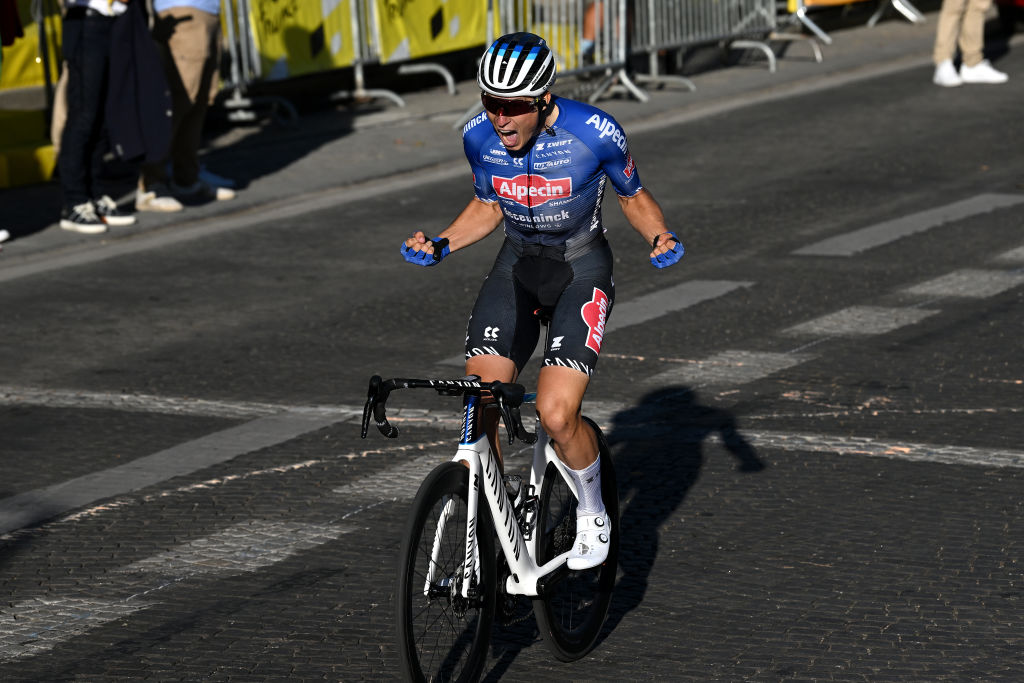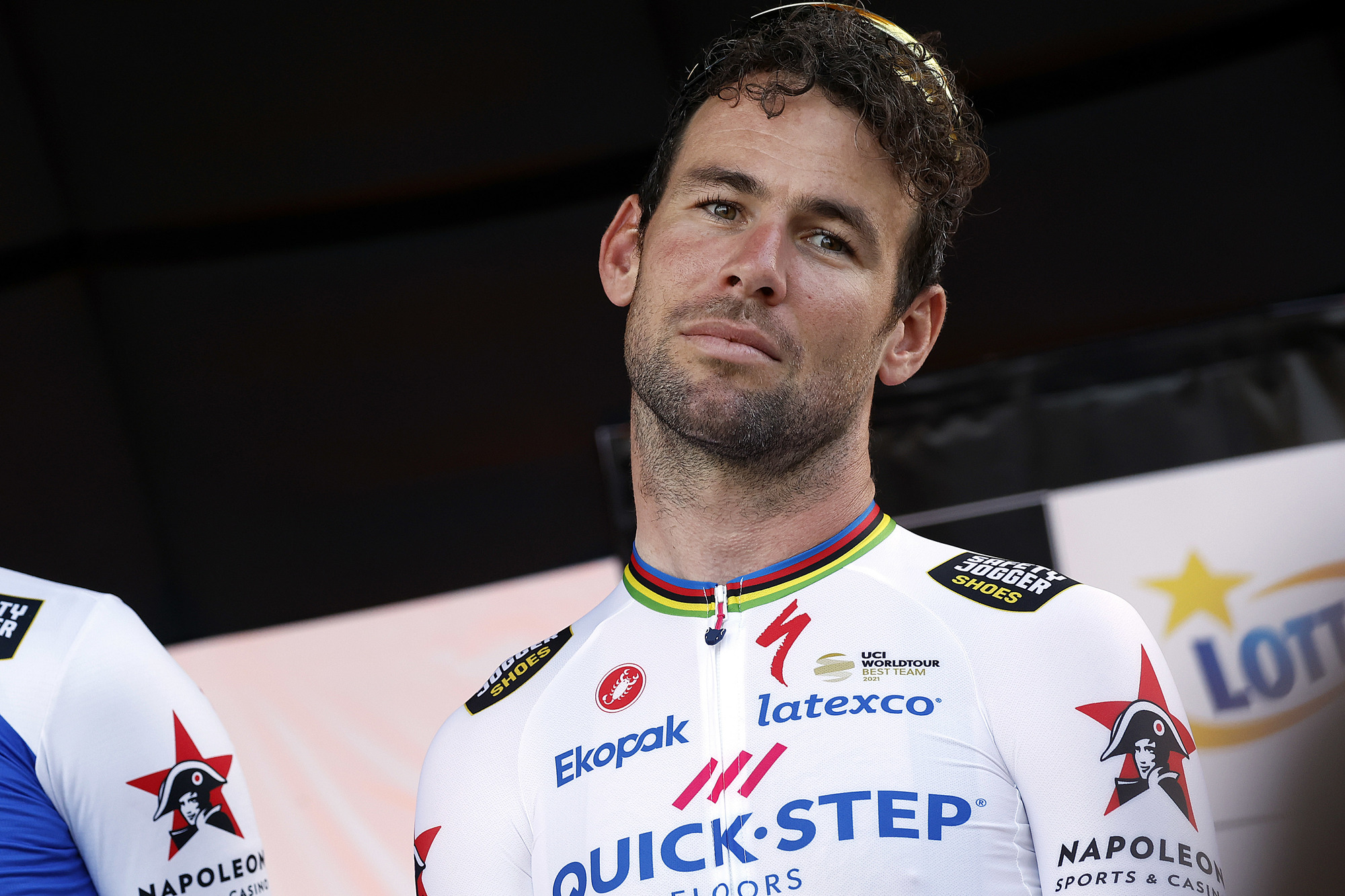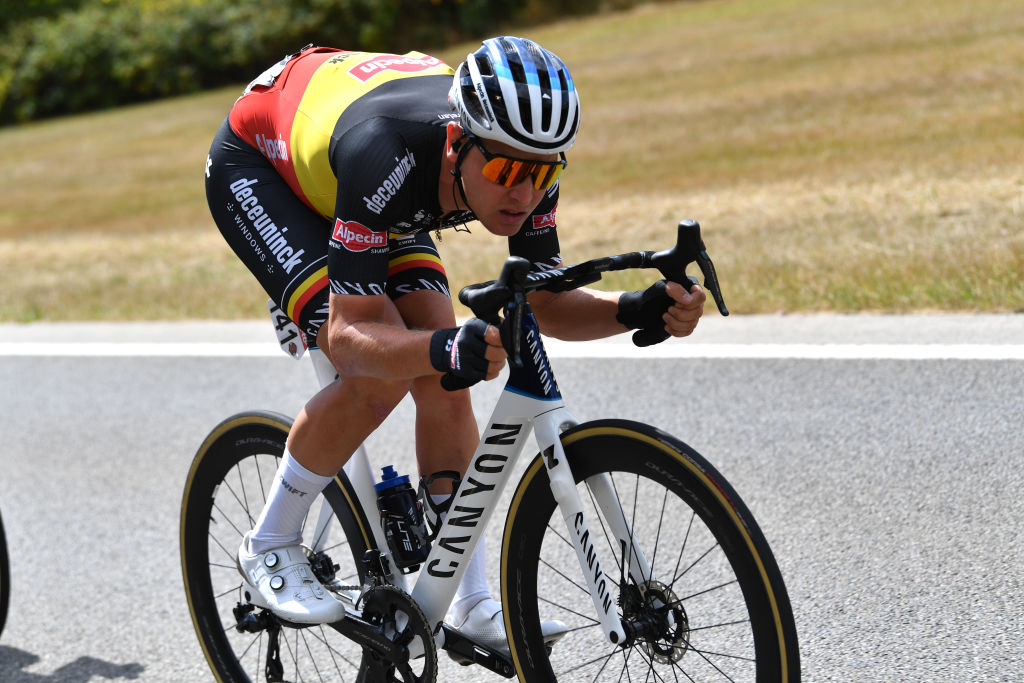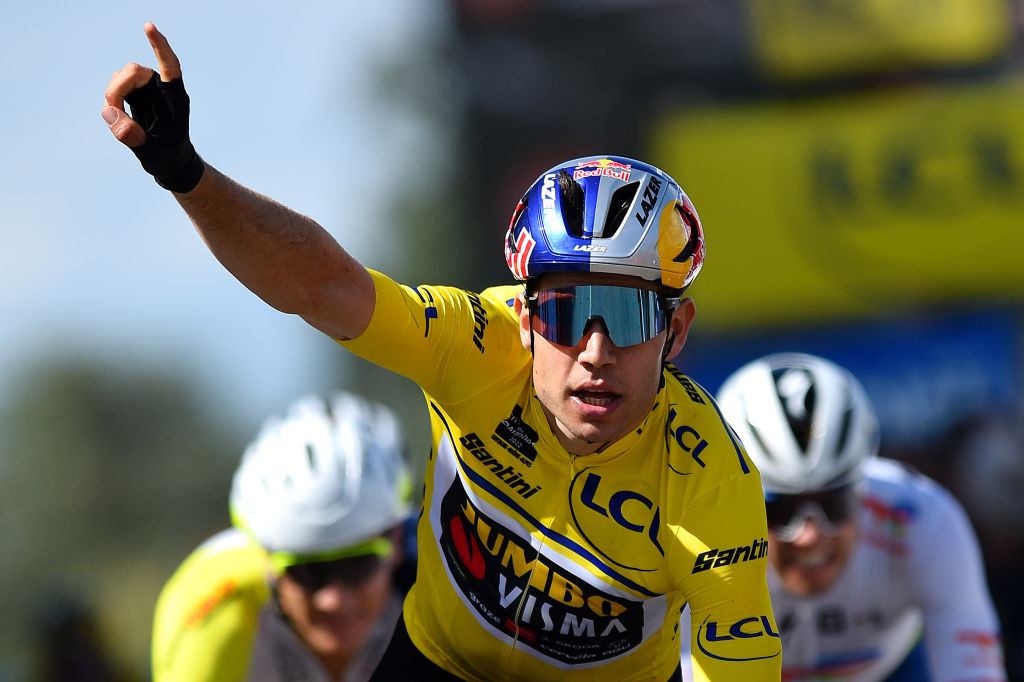'Who's the fastest?' - André Greipel assesses the current generation of sprinters
In an extract from The Road Book, Greipel looks at the peloton's fast men

In this extract from The Road Book 2022, André Greipel examines the current generation of sprinters in the men’s professional peloton and picks out the finest exponents of the art for a closer analysis. The fifth edition of The Road Book is the definitive cycling alamanac, supplying data from every single WorldTour race across the Men’s and Women’s calendar, as well as essays and editorial from leading figures within cycling.
In the current peloton, it is nice to see so many sprinters battling for the win race after race. This is my pick of the top ten sprinters from the current generation. I could have written about another five – but these ten riders are always consistent, with a track record of delivering wins over years or even decades – and I had to make a choice. I hope all the sprinters I have omitted are understanding of my picks. So, here is my top ten.
Caleb Ewan

Caleb has his roots in Sydney. The son of a Korean mother and an Australian father, he spent his childhood in Australia. He started training on the bike at the age of eight, and by the time he was nine he was already competing. Having switched a lot between track and road racing as a young rider, he was conscious of developing a very high leg speed, and that helped him win lots of races in both disciplines.
I first became aware of Caleb when he won the Jayco Bay Criterium Series in 2012. At the age of 17, he won ahead of Robbie McEwen. I was impressed by his body mass and explosiveness during the sprints – he looked like the ultimate ‘pocket rocket’.With his aerodynamic style of sprinting, he could make the difference even coming from a bad position in a sprint. After he finished fourth at the World Championships in Florence in 2013, he showed himself to be not just a good sprinter: he can also climb with the best when he sets his mind to it and has prepared well.
His early career results came very fast. The way he positions himself with his body size is quite insane. He isn’t scared to take risks or open the sprints from a long way out, often finding gaps nobody else could. Think of the Tour de France 2020 stage 3, when he won ahead Sam Bennett. Caleb isn’t a rider who needs a lead-out train. His peak power – around 1600 watts at 69kg (more than 23 watts/kg) – is outstanding. Mostly the team delivers him to the last kilometre and then Caleb follows his instinct to position himself on the wheel he wants.
During uphill sprints he has an advantage with his weight; during headwind sprints he has the advantage of his sprinting style. He reminds me of Cav, but Caleb has developed a unique position that has made him even more aero.
When he moved to Lotto Soudal he got the team and support he wanted.The new trainerWim van Holst helped him progress further in the climbs, which opened up new horizons for him. In this way, he has been able to compete in even more uphill sprints, with maximum efforts for around 5–8 minutes. We saw this on stage 4 of the 2019 Giro, when he came second (behind Richard Carapaz!). In my opinion, he shouldn’t be in such trouble during the big mountain stages, but there it is a matter of his will to suffer, which isn’t always on point.
The latest race content, interviews, features, reviews and expert buying guides, direct to your inbox!
Jasper Philipsen

His aerodynamic position while sprinting gives him an advantage – or at least equals his chances compared to all the other sprinters. Jasper has already won so many big races in his career and, by winning twice this year at the Tour de France 2022 (stages 15 and 21), he has taken himself to the next level and will continue to improve over the coming years.
Jasper comes from the little Belgian town of Mol, close to the Dutch border. When you were born in the motherland of cycling – and in the hometown of the great Tom Boonen – you have no choice but to become a cyclist! At a young age he was already successful and enjoying cycling. He was already fast in the youth categories but he became a good time triallist too, coming sixth at the junior World Championship Time Trial and winning the Belgian national title in 2015 and 2016. He was cautious about joining a big team as an Under-23, but he was successful, guided by Axel Merckx who helped him to improve step by step. Tom Boonen became his mentor and was sure that Jasper would become the next big sprinter in Belgium.
During the 2019 Tour of California I could already see his ability to position himself alongside the big teams and riders. He almost never fails to be in a good position before a sprint, even without a full lead-out train. His bike-handling skills are top class. His body composition (176cm, 70kg) makes him perfect for the new era of sprinters. He climbs incredibly well and, as a result, can contest sprints from a smaller bunch. The way he sits on the bike and his pedal stroke are pure class with a lot of style. It never looks like he is suffering as he always rides with a pretty high cadence all day.
Mark Cavendish

Born on the Isle of Man in 1985, Mark moved first from BMX to track and road, where he found his true passion for the sport. With his multiple world titles on the track, he got the chance as a stagiaire in the prestigious T-Mobile team, where I was too. His first appearances weren’t that successful, and he found out how hard the professional sport is. But the T-Mobile development programme provided him with his first professional contract, and it didn’t take long for him to start winning.
Mark didn’t look like a pro bike rider. He was not as lean as a pro rider should be. But he didn’t care, and let his fast legs show the world who Mark Cavendish really was. He took sprinting into a new era. His aerodynamic style of sprinting was something never seen before. He has an amazing skill to find gaps to position himself for the sprints. Mark also has everything a sprinter needs to have: the instinct, the jump, no fear and the ability to do a long sprint when necessary. Even though it wasn’t needed for him, he got a full lead-out train with T-Mobile/HTC and proved on every occasion that he was the best sprinter of his generation. By winning Milan–Sanremo in 2009, he showed too that he can climb well when he needs to.
Of course, I could note down lots of amazing sprints, but the most impressive thing about Mark is his belief in himself. Lots of times competitors and media wrote him off after struggling with sickness and minor results, but Mark kept believing and in 2021 he showed the world who the king of sprinting throughout multiple generations is. He might not have been in his best shape on the climbs but he was super-fast after being delivered by his team. After his struggle with sickness, I guess he knew he had to change his view of the sport and has got more and more professional not just with nutrition but also in his training. It will be exciting to see how long Mark can continue to deliver victories, but he will keep believing until the very last race.
Tim Merlier

Tim was born in Wortegem-Petegem in Belgium. As he made his way through the younger categories, he was more of a cyclocross rider. He was world class in the junior and Under-23 categories.Yet somehow, when he turned pro he was just an ‘average’ cyclocross rider and only won a few events. But he was able, along the way, to post some decent results while racing as an Under-23 on the road.
He kept on with the double programme until 2018, focusing more on cyclocross than on the road. After 2018 he found himself without a contract, but Corendon-Circus, the former Alpecin-Deceuninck team, gave him the chance to develop more as a road rider.They also gave him his chance as a sprinter. He surprised himself straight away with good results, becoming the Belgian Road Race champion. His confidence grew from race to race until he made his full breakthrough in 2021 by winning his first Grand Tour stage (at the Giro and then at the Tour de France).
Tim has a really good, explosive jump. Cyclocross preparation is still a fundamental part of his training. His team delivers him mostly into ideal positions, where he can make the difference between winning and losing. He isn’t afraid to go for a long sprint either. However, with Jasper Philipsen (who made a big leap forward in 2022) alongside him in the team,Tim was always going to be overlooked in the bigger races. That is why for 2023, he will be moving teams.
His weak point is climbing. His base isn’t good enough to get through a Grand Tour yet. His weight (around 80kg) means his natural advantage always kicks in when the road goes up, and that puts him in difficulty. It will be a big challenge for him in Soudal QuickStep to get the same opportunities as he got with Alpecin-Deceuninck.
Wout van Aert

Though Belgian, Wout is the son of Dutch parents, which is why the ‘van’ in his name is lower case. He was always world class in the younger categories in cyclocross, he was world and European champion in the Under-23 category in 2014, and from 2016 to 2018 he was the undisputed world champion in the Elite category.
During that time, he started to race more on the road – increasingly so in 2018. The Classics campaign that year showed his power and desire to perform with the best in the world. Lots of teams were fighting to sign Wout but he decided to go to Jumbo, where he found what he needed to develop as a top athlete. His cyclocross training makes him such an explosive rider; the one- hour efforts during the winter are also developing him as a world-class time triallist.With all these attributes, plus a full focus on the road in the professional environment of Jumbo-Visma, he has got better and better on every possible terrain.
Everything Wout does looks like a walk in the park. When others are suffering, he still feels OK. He doesn’t need a team to get him in a position for the sprints or before decisive moments during a race. His bike-handling skills are simply outstanding.
In summary,Wout is a once-in-a-century wonder and there is nothing he can’t do. It is always a pleasure to see him sprinting, time-trialling, climbing or racing cyclocross.You can’t put him in any box; he is top class in absolutely everything. Even in running – something he does during the season too – he is far better than any other cyclist!
Fabio Jakobsen

Another rider from the Netherlands, Fabio knew that in the youth categories he could always could count on his fast legs. The same was true in some of the smaller races, but it took him until 2017 to perform in the higher ranks. He eventually found glory in a lot of appearances in the Under-23 category, like the Olympias Tour and the Tour de l’Avenir. During that time he was pretty much unbeatable in a sprint, and so QuickStep signed him up. He instantly delivered, winning the prestigious Scheldeprijs and the Nokere Koerse.
On the bike, Fabio looks like a machine. His body silhouette is pure muscle, very athletic. The ‘heavyweight’ sprints don’t really exist any more, but Fabio is made for them. In flat track sprints, you can see his power (around 1900 watts) and how he is always able to sprint in the way he wants. His team, of course, has a full lead-out to deliver him and he knows he can count on them.
Before a sprint he is really relaxed and knows what he is doing without getting stressed. It is also a miracle that he can perform as he does after his appalling crash. Normal people would not want to take those risks any more, but Fabio is still able to handle the pressure and stress before a race. True, I can clearly see he is taking slightly fewer risks now, and he reacts differently and sometimes goes around riders where, before the crash, he would have squeezed through the gaps.
Anyway, it is nice to see his pure-power sprints, and for me he is the fastest of all the sprinters at the moment.
To keep reading about André’s four other picks, pick up a copy of “The Road Book” at www.theroadbook.co.uk